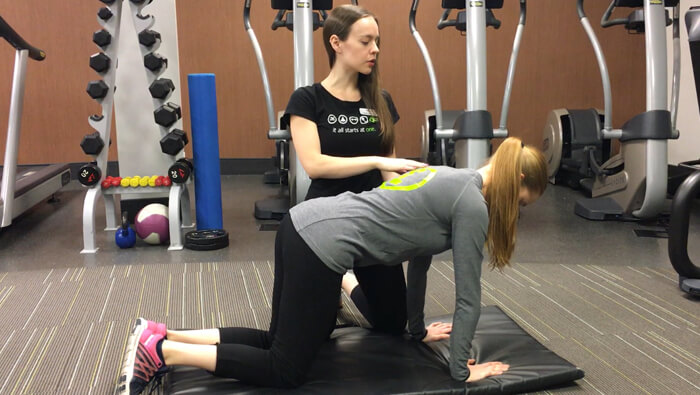
Say Goodbye to Back Pain
3 Core Exercises You Should be Doing Every Day
If you have back pain, you’re not alone!
Check out these stats:
5 out of 10 Canadians have suffered lower back pain – in a six-month period
Up to 85% of working people can expect to experience lower back pain in their lifetime.
In Canada, the estimate of medical costs related to lower back pain is between $6-$12 billion dollars annually!
If you suffer from back pain, or want to prevent back pain, keep reading. Don’t become one of these statistics!
To achieve symptom relief, many people are advised to STRETCH back muscles.
However, stretching, at times, can often make the problem worse because it puts the lower back into flexon. For people who are intolerant to flexion movements (bending forward), it only makes a bad back hurt more.
More often than not, people experience pain when they move poorly, and that typically happens when they become fatigued. The fatigue may stem from poor form on your last set of squats, or it may occur when you are carrying groceries, picking up your baby, shoveling the driveway…and the list goes on!
Maintaining proper movement throughout the day requires endurance. Improving your endurance, not your strength, will help avoid awkward postures; which often lead to back pain.
This is where the McGill Big Three comes in.
Endurance movements form the backbone of Dr. McGill’s recommended core and low-back exercises.
Dr. Stuart McGill is a researcher and professor who has studied the causes and treatment of back pain for more than 30 years. He has authored hundreds of peer-reviewed journal articles, written four books, and authored chapters in many more. He continues to train and educate professionals around the world in his method of treatment.
Dr. Stuart McGill believes that the key to successful treatment of back pain is to first understand the cause — which is often a cumulative effect of poor movement patterns. While most treatments include exercises focusing on strengthening core muscles, Dr. McGill believes core muscle endurance is more important.
Dr. McGill designed a treatment intervention comprised of three exercises; commonly known as the “Big Three” – to build endurance in the muscles of the core and lower back; which help stabilize the spine.
To get technical: As Dr. McGill explained to the American Council on Exercise, “True spine stability is achieved with a ‘balanced’ stiffening from the entire musculature including the rectus abdominis and the abdominal wall, quadratus lumborum, latissimus dorsi and the back extensors of longissimus, iliocostalis and multifidus.”
More simply put: Your spine is made up of stacked bones – your vertebrae. In between each bone is a cushion, or disc. These structures absorb shock and support your spine while allowing movement.
Spinal flexion, or bending forward, places a great deal of stress on these vulnerable structures.
For this reason popular exercises, such as stability ball crunches, should actually be avoided. Instead, McGill suggests leaving spinal flexion for daily activities that require this movement, such as tying your shoes.
Performing the Big Three exercises on a daily basis, and prior to squatting or deadlifting, will help in maintaining a healthy spine and will make your back much more resilient to injury.
The Big Three consists of:
1️⃣ The McGill Crunch
2️⃣ The Side Bridge (Rolling Plank)
3️⃣ The Bird Dog
CLICK HERE for full video demonstrated by Personal Trainer and Registered Kinesiologist Erika Labinowicz.
1️⃣ McGill Crunch
Start by performing 3-5 per side and work your way up to 10 per side. Hold each one for 10 seconds
TIP: First 5 seconds hold your breath with the belly inflated Last 5 seconds, exhale and deflate your belly (think ribs down to front pocket)
2️⃣ Bird Dog
Start with 3-5 per side with a 10 second hold and work your way up to 10 per side.
TIP: Remember to keep your toes down to the floor and don’t let the low back cave in
3️⃣ Rolling Plank
Start with a 5 second hold in each position, then a 10 second hold working your way up to 30 seconds
TIP: The goal is to coordinate the shoulder and hip rotating/moving at the same time.
For more healthy tips, recipes and motivation check out more of our blogs.